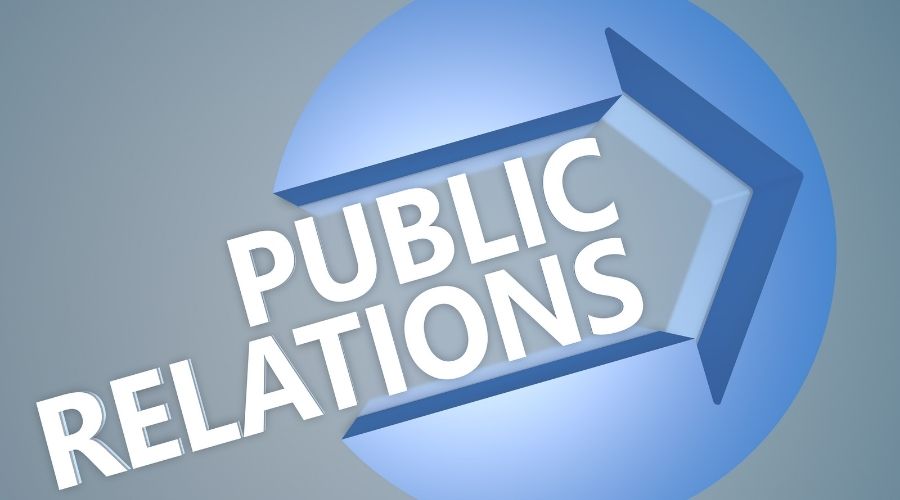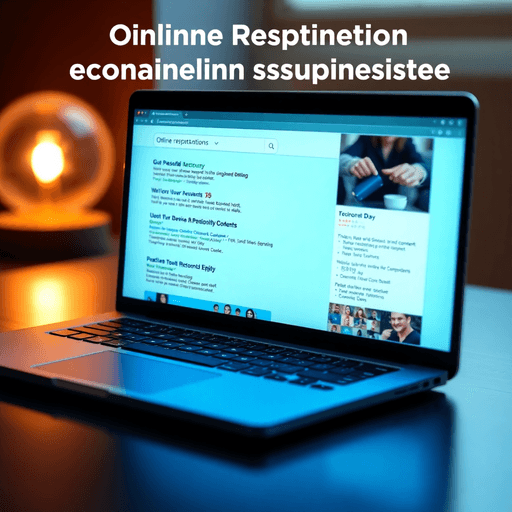Understanding Crisis Management
Importance of Crisis Management
Crisis management is a big deal for businesses. It’s all about managing the mess when things go south. We’re talking about the hiccups, those minor annoyances, or, heaven forbid, the big kahunas where people might get hurt. It’s about pulling out the blueprint, rallying the troops, and making sure everyone’s needs are front and center, all while trying not to crash the brand’s image.
- Mitigating Damage: Spot the threats and tackle them before they snowball.
- Maintaining Trust: Be upfront and human with folks to keep them on your side.
- Reputation Management: Keep the brand looking good during the storm and after.
- Effective Communication: Be honest, tackle worries head-on, and keep the updates rolling in.
- Future Prevention: Adjust to dodge a repeat disaster.
Types of Crises
Companies often hit rough patches that call for their game plan. Getting a handle on these different situations is key.
- Natural Disasters
- We’re talking floods, quakes, the works.
- Impact: Operations take a hit, and safety concerns pop up.
- Technological Failures
- Crashing systems, hacked data.
- Impact: Stop in operations, trust tanking.
- Financial Crises
- Economic nosedives, going bust, dodgy dealings.
- Impact: Money woes, confidence taking a holiday.
- Regulatory Changes
- New rules, missteps in compliance.
- Impact: Legal headaches, scrambling to adjust.
- Criminal Activities
- Theft, damage, sneaky spying.
- Impact: Hit to the finances, brand reputation takes a blow.
| Types of Crises | Examples | Impact |
|---|---|---|
| Natural Disasters | Quakes, floods | Operations were disrupted, and safety fears |
| Technological Failures | Data hacks, system crashes | Shutdowns, loss of trust |
| Financial Crises | Going bust, sketchy fraud | Financial pain, shaky confidence |
| Regulatory Changes | New regulations, compliance | Legal scramble, need for adjustments |
| Criminal Activities | Theft, vandalism, espionage | Money loss hit to reputation |
A solid crisis plan should cover all these bases, ready for action when needed. Check out our public relations strategies and corporate communication strategies articles for more tips on keeping your organization’s image intact during tough times. Also, take a look at our pr crisis communication page for examples of well-played crisis communication.
Developing a Crisis Management Plan
Bouncing back from a crisis in PR takes more than guesswork—it’s about having a solid game plan. Here’s how to set up a killer strategy and crew to tackle any curveballs.
Crafting a Crisis Response Strategy
An A+ crisis response strategy is your compass when everything else is going haywire. Nail these steps down to keep your ship steady no matter what hits you:
- Risk Assessment: Know where you might trip up. Check those risks like it’s your job. It is. Keep it fresh—update your assessments regularly.
- Response Protocols: Got a list for the grocery store? Great. Now, make an even better one for crisis scenarios. Line up what’s needed for each situation.
- Communication Plan: Say what you mean and mean what you say. Set up how you’re gonna keep everyone looped in, from the folks on the inside to the ones watching from afar.
| Part | Important Moves |
|---|---|
| Risk Assessment | Spot and size up potential trouble spots. |
| Response Protocols | Lay out clear steps for different crisis scenarios. |
| Communication Plan | Cook up clear messages for insiders and the outside world. |
Want the skinny on building a bulletproof communication plan? Head over to our piece on PR crisis communication.
Building a Crisis Management Team
You can’t down a crisis solo, so gather a crew with street smarts from every corner of your business to steer the ship back on course.
- Team Dynamics: Tap into talents across operations, finance, HR, communications, IT, legal, and the brass.
- Define Roles: Everybody should know their job and their limits. No muscling in on someone else’s turf when the heat is on.
- Expertise Matters: You’re gonna want folks who know the ropes, able to eyeball the impacts of the crisis and take on the nitty-gritty.
| Section | Job during Crisis |
|---|---|
| Operations | Keep the business going and sort out the logistics. |
| Finance | Crunch numbers to manage funds and allocate resources. |
| Human Resources | Keep the troops safe and informed. |
| Communications | Control the narrative and keep the press in check. |
| IT | Protect your digital backdoor against cyber creeps. |
| Legal | Tackle any legal messes and stick to the rules. |
| Executive Team | Lead the charge and call the shots from the top. |
Peep more tricks for your org’s slick PR moves at public relations strategies.
Testing your crisis plan isn’t a one-time gig. Keep it sharp with tools like event management platforms to rally your response team. Keeping it honest with workers and onlookers helps your company stride out of chaos with dignity. Acknowledge the hiccups and push for teamwork before, during, and after crisis moments.
For more on how to get everyone on the same page, swing by our chat on corporate communication strategies.
Implementing Crisis Management Strategies
Getting a grip on crisis management is like having a fire extinguisher at the ready—it’s a must for keeping the public’s faith and saving face. Let’s break it down, one step at a time, with a splash of wit where needed.
Communication in Crisis Management
When things go pear-shaped, you’ve got to talk straight. Communication needs to be upfront, heartfelt, and sometimes even a bit cheeky to hold onto that trust. We’re talking about getting the message out there to anyone who’ll listen, through words or video clips.
| Communication Strategy | Key Element | Example |
|---|---|---|
| Transparency | Honesty | KFC’s open apology |
| Empathy | Sincerity | Slack’s statements |
| Timeliness | Updates | Tide’s crisis ads |
Have a chinwag with stakeholders. Being open, admitting goofs, and laying out your fix-it plan can rebuild bridges. If you’re keen to learn more, have a gander at our article on corporate communication strategies.
Testing and Exercising the Plan
Testing the plan is playing pretend so you’re ready when the real stuff hits the fan. Regular run-throughs pinpoint the wobbly bits and bolster your game plan.
Some tried-and-true methods include:
- Tabletop Exercises: Pretend crisis chats in a controlled setting.
- Live Simulations: Real-time practice runs that feel like the real deal.
- Drills and Training: Keeping sharp with consistent team workouts.
| Testing Method | Frequency | Purpose |
|---|---|---|
| Tabletop Exercises | Quarterly | Chat about tactics |
| Live Simulations | Annually | Real-world practice |
| Drills and Training | Twice a year | Get the team battle-ready |
Want to know more about nailing down and testing a crisis response? Check out our piece on pr crisis communication.
By focusing on speaking up and rehearsing the heck out of your plan, you can handle whatever curveballs come your way. Ready to dive deeper? Peek at our guide on public relations strategies.
Case Studies in Crisis Management
Checking out past issues with fresh eyes brings savvy tips for handling a mess like a pro. We’ll dive into both the triumphs and stumbles in crisis management to arm ourselves for the next storm.
Notable Crisis Management Successes
Let’s take a peek at some sharp moves that are worth remembering.
1. Johnson & Johnson – Tylenol Poisoning (1982)
If you ever find yourself in a sticky situation, look no further than Johnson & Johnson’s playbook during the Tylenol catastrophe. When cyanide hit Tylenol capsules, leading to tragic losses, the company didn’t flinch. They stopped production, yelled it from the rooftops, and told it straight. This method puts safety first, and guess what? They saved the day by hanging on to their good name.
| Action Taken | Outcome |
|---|---|
| Stopped making Tylenol and halted the ads | Got back public trust |
| Shouted warnings and talked openly | Kept folks safe |
| Told it like it was | Kept their name intact |
2. Pepsi – Kendall Jenner Ad (2017)
Sometimes an ad can miss the mark. That’s what happened with Pepsi’s ad featuring Kendall Jenner. Folks weren’t impressed, accusing it of making light of serious social issues. But Pepsi didn’t drag their feet—they yanked the ad and said sorry. Quick with empathy and owning the slip-up saved their skin.
| Action Taken | Outcome |
|---|---|
| Pulled the ad ASAP | Stopped more fallout |
| Said sorry to the public | Won back some good feelings |
| Owned up to the mess-up | Put a lid on the crisis |
Thinking about brushing up on more savvy PR tricks? Check out our guide on public relations strategies.
Lessons Learned from PR Disasters
When things go south, it can teach us a ton. Here’s what not to do and how we can beef up our game.
1. United Airlines – Passenger Removal Incident (2017)
Remember that United Airlines kerfuffle where they yanked a passenger off a full flight? Not a good look. The CEO’s apology hit the wrong note, feeling more ‘protect-the-business’ than ‘sorry-we-messed-up.’ That attitude fired folks up even more, turning a PR hiccup into a full-blown mess.
| Misstep | Result |
|---|---|
| Wobbly and half-hearted apology | Fans the flames of backlash |
| Dragging their feet on fixing the issue | The crisis lasted too long |
| Robot-like communication | Eroded trust in the brand |
2. Cracker Barrel – Employee Dismissal (Unspecified Date)
When Cracker Barrel chose to keep mum about firing an employee amidst social media frenzies, it wasn’t the financial end of the world. But the silence did leave people grouchy and asking questions. A missed chance to clear the air and ease the tension.
| Misstep | Result |
|---|---|
| Zipping their lips | Left people guessing |
| Ignoring the storm on social media | Bad vibes lingered |
| Didn’t chat with the crowd | Missed a bridge-building moment |
Want more on nailing crisis talks? See our piece on PR crisis communication.
By chewing over these stories, we pick up pointers on the must-knows like quick, heartfelt responses and keeping it real with the public. Knowing the hits and misses means we’re a step ahead in handling things when they go haywire. Need more gems? Check out our tips on corporate communication strategies and reputation management techniques.
Using Technology for Crisis Handling
Nowadays, modern technology is like our trusty sidekick in whipping our crisis handling into shape. With clever gadgets and snazzy platforms, we can shave precious time off our response time and make things roll smoother. Below, we’ll talk about why these fancy crisis platforms rock and why real-time snooping and incident tattlettattletalesper are important.
What’s Cool About Crisis Platforms
Think of a crisis management platform as HQ for coordinating our scramble when a situation hits. Tech gives us the edge in yelling out crucial info to everyone from employees to stakeholders, making sure what needs to be said gets said fast. No blunders here, just clear heads, and quick action.
Some nifty perks of these crisis platforms:
- Central Spot for Team Efforts: Keeping everything in one place means no crossed wires.
- Fast & Furious Updates: Everyone gets the memo without delay.
- Heads-Up Display: Seeing the situation unfold in real-time sharpens our judgment.
- On-the-Fly Decisions: Having the right info means our moves are spot-on and quick.
| Platform Goodies | What You Get |
|---|---|
| Central Spot for Team Efforts | Cuts out miscommunication |
| Fast & Furious Updates | Everyone’s kept in the loop |
| Heads-Up Display | Smarter, more precise actions |
| On-the-Fly Decisions | Allows for faster action plans |
Riding on the back of such platforms, we tackle crises like pros, hand-in-hand and locked-in. Keen for more tips? Check out our PR strategy guide.
Real-Time Snooping and Quick Reporting
Having ears to the ground in real-time and finger-tapping instant reports is key to crisis handling in PR. When we can see what’s going on and snatch data from everywhere, we’re ready to jump in proactively. Also, having immediate incident tattles sets the stage for quick fixes and gathers a handy logbook for tweaking our future moves.
The good stuff about being quick on your feet with real-time features:
- Data Collection On-the-Go: Keeping us clued in every second.
- Incident Bookkeeping: Handy-dandy records so we can do better next round.
- Swift Moves: Fast reports mean fast action and locking down damage.
- Spotting Trends: Our incident book helps us see patterns and grow smarter.
| Snooping Device | Edge It Gives |
|---|---|
| Data Collection On-the-Go | Stays one step ahead |
| Incident Bookkeeping | Handy insights for improvement |
| Swift Moves | Slaps down issues promptly |
| Spotting Trends | Grows our strategy smarts |
With these techy wizardries, we’re more tuned in to pivot on a spin in a crisis. Check out more on better communication techniques on our corporate comms page.
Technology’s squad of crisis tools helps us keep our cool with a planned, shared effort. This gears up our reputation strategy and muscles up our crisis game plan. For more on keeping a good name, dive into our reputation tactics toolkit.









